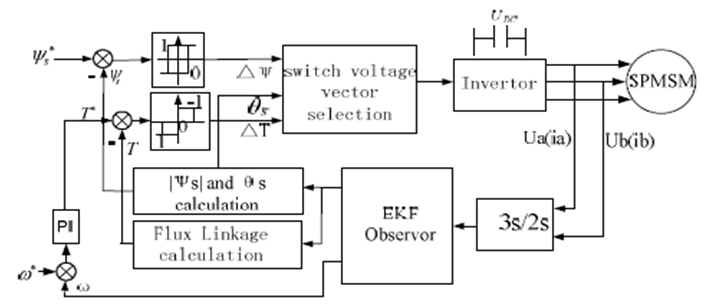A High-Efficiency
Wide-Input-Voltage Range Switched Capacitor Point-of-Load DC–DC Converter
ABSTRACT:
The traditional inductor-based buck converter has been
the default design for switched-mode voltage regulators for decades. Switched
capacitor (SC) dc–dc converters, on the other hand, have traditionally been
used in low-power (<10 mW) and low conversion ratio (<4:1)
applications where neither regulation nor efficiency is critical. This study
encompasses the complete successful design, fabrication, and test of a
CMOS-based SC dc–dc converter, addressing the ubiquitous 12–1.5 V board mounted
point-of-load application. In particular, the circuit developed in this study
attains higher efficiency (92% peak, and >80% over a load range of 5
mA to 1 A) than surveyed competitive buck converters, while requiring less
board area and less costly passive components. The topology and controller
enable a wide input range of 7.5–13.5 V. Controls based on feedback and feed forward
provide tight regulation under worst case line and load step conditions. This
study shows that the SC converter can outperform the buck
converter,
and thus, the scope of SC converter application can and should be expanded.
KEYWORDS:
1. DC-DC power converters
2. switched
capacitor circuits
3. switched-mode power supply
SOFTWARE: MATLAB/SIMULINK
BLOCK DIAGRAM:
Fig. 1. Overall block diagram of the controller.
CONCLUSION:
The
traditional inductor-based buck converter has been the default design for
switched-mode voltage regulators for decades. Switched capacitor (SC) dc–dc
converters, on the other hand, have traditionally been used in low-power (<10
mW) and low conversion ratio (<4:1) applications where neither
regulation nor efficiency is critical. This study encompasses the complete successful
design, fabrication, and test of a CMOS-based SC dc–dc converter, addressing
the ubiquitous 12–1.5 V board mounted point-of-load application. In particular,
the circuit developed in this study attains higher efficiency (92% peak, and >80%
over a load range of 5 mA to 1 A) than surveyed competitive buck converters,
while requiring less board area and less costly passive components. The
topology and controller enable a wide input range of 7.5–13.5 V. Controls based
on feedback and feed forward provide tight regulation under worst case line and
load step conditions. This study shows that the SC converter can outperform the
buck converter, and thus, the scope of SC converter application can and should
be expanded.
REFERENCES:
[1]
M. Seeman and S. Sanders, “Analysis and optimization of switched capacitor dc–dc
converters,” IEEE Trans. Power Electron., vol. 23, no. 2, pp. 841–851,
Mar. 2008.
[2]
M. Seeman,V.Ng, H.-P. Le,M. John, E. Aton, and S. Sanders, “Acomparative analysis
of switched-capacitor and inductor-based dc–dc conversion technologies,” in Proc.
IEEE Workshop Control Model. Power Electron. (COMPEL), Jun. 2010.
[3]
M. Seeman, “A design methodology for switched-capacitor dc-dc converters,” Ph.D.
dissertation, UC Berkeley, Berkeley, CA, May 2009.
[4]
High Efficiency, 250 mA Step-Down Charge Pump, Texas Instruments (TPS60503),
Dallas, TX, 2002.
[5]
500 mA High Efficiency, Low Noise, Inductor-Less Step-Down DC/DC Converter,
Linear Technology (LTC3251), Milpitas, CA, 2003.






